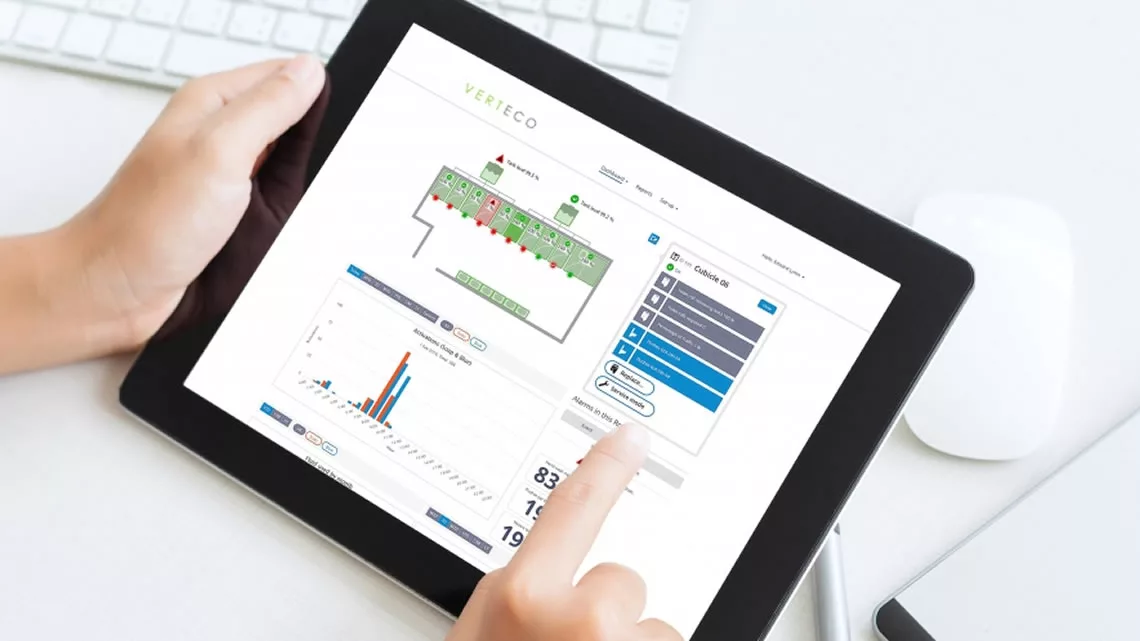Blogs
Smart Washrooms Increase Savings

How the implementation of smart, IoT technology can improve washroom experience and operational efficiency
The public washroom is a relatively mundane yet hugely essential part of everyday life. In busy places with a high footfall, such as airports and malls, large numbers of people can be using public restrooms at the same time. As a result, huge investments are made to keep them running efficiently. Consumables need to be topped up, the washrooms must always be clean and maintenance issues sorted as quickly as possible to avoid disruption. This takes a lot of time and money to coordinate and if it isn’t managed effectively, user experience is affected and customer satisfaction decreases.
No one wants a bad washroom experience and issues like a lack of toilet paper, bad smells or dirty sinks really do put people off. In fact, studies have found that when people report a negative washroom visit, the time they spend in an establishment decreases drastically and they are less likely to return in the future.
What is a Smart Washroom?
Real-time data can be assessed and reviewed to give an understanding of usage patterns, improving overall operational efficiency, ultimately offering businesses a reduction in cost. The VERTECO Smart Washroom solution is ideal for anywhere with a large footfall; airports, malls, hospitals, and stadiums, by allowing easy identification of operational, and hygiene, issues before they arise.
8 Ways Smart Washroom Solutions increase savings
The potential for cost savings through Smart Washroom technology is huge. Maintenance schedules of cleaning staff can be adapted by monitoring real-time usage data. This means that cleaning patterns can be adapted when necessary and allows more efficient allocation of staff when and where they are needed. The technology also allows alerts to be sent to staff when consumables such as soap and tissue paper are running low, meaning a reduction in the need to check dispensers unnecessarily. By only restocking when necessary, waste is also reduced, offering environmental efficiencies. Technology can also be fitted to washroom equipment; an alert is sent to facilities management staff when an issue is detected, allowing it to be sorted immediately, before a major problem develops, which can extend the life of equipment and reduce the number of major repairs needed.
- Water management – amount of water used can be monitored and leaks detected immediately, increasing life of equipment
- Air quality – Humidity can be monitored, and air temperature set at the most cost-effective temperature
- Usage – Footfall is monitored to allow staff schedules to be managed accordingly
- User happiness – Satisfaction can be assessed, and changes made where necessary
- Consumables – Management of usage levels and replacement alerts, eliminating unnecessary checks
- Wastes bin levels – Alerts sent only when they are full, or an issue reported, reducing unnecessary changes
- Cleaning staff – More efficient management of cleaning schedules
- Taps – Water usage measured and reduced, temperate controlled to reduce infection risk
Post-COVID essentials
Improving Customer experience through IoT
Heathrow Airport in the UK has installed the technology and as a result, achieved reduced operating costs on a large scale. Steven Mearns, Head of Engineering and Facilities said “Having tried a number of IoT enabled products in the past, I was skeptical it wouldn’t cope with the demands of a busy airport environment. Based on the VERTECO Smart Platform in a high traffic landside washroom, I confirm the platform helped identify patterns and trends, adjusted planned maintenance schedules, avoided us running out of consumables and also saved substantial amounts of water in the process. This has also assisted us in our water reduction targets, reducing operational costs and improving passenger experience”.
A future that prioritises public safety
As we face the world after a pandemic, it is obvious that many sectors won’t ever return to the way things were before. The ‘new normal’ will look very different for many businesses, and companies like VERTECO, which utilize technology to offer investor savings, while also prioritising public safety, will lead the way.
Latest Posts
8 Ways that Waterless Urinals are better than Traditional Urinals
Waterless urinals offer an innovative and environmentally friendly alternative to traditional flush urinals.
VERTECO Partners with Quensus to Boost Leak Detection Services in the Middle East
In the UAE, water leaks are the single biggest contributor to water wastage, occurring everywhere from water tanks and district cooling to swimming pools and irrigation systems. Yet most of us are unaware they are happening.
VERTECO Joins Prestigious Middle East Facility Management Association
VERTECO, the region’s leading provider of award-winning Smart washroom solutions, water-saving products, and data-driven cleaning technology
Maximizing ROI: Smart Cleaning vs. Traditional Staff Management
In today’s fast-paced world, businesses are always looking for ways to optimise operations while minimising costs.
Improving Indoor Air Quality for Optimal Workplace Wellness
In recent years, there has been growing awareness around the importance of indoor air quality. COVID-19 made us all stop and think about what is actually in the air we breathe
